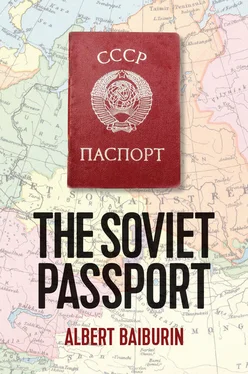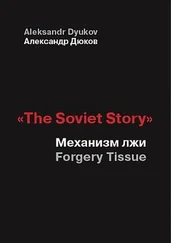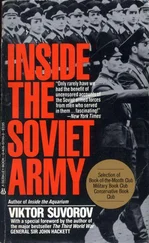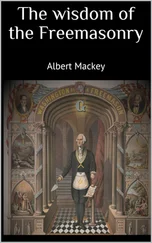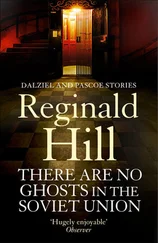We can probably talk about a ‘passport system’ (as opposed to the issuing of travel documents) only once the system of control and registration of such documents and their owners was in place. Peter is responsible also for the creation of the police force, which was the body given (as Valentina Chernukha puts it), ‘the task of investigating the availability of a passport, handling its registration, checking it and catching those without passports. The passport provided the police with a very simple and convenient document with which to check whether citizens were abiding by the law.’ 24
Which details did the authorities consider essential to describe a person in documents? Above all, the first namewas legally considered the basic identifying factor for a person. This is still the case. And a Russian historical peculiarity was that it had become normal for a person to have not one name, but at least two. For centuries people had used the Christian name they were given at baptism and a secular (or folk) one. The secular name could come from a number of sources. Frequently it was a nickname which played on a person’s character. 25A person was given a second name not straight after birth, but rather later, when certain characteristics became clear. For example, this may be when they had their hair cut for the first time. And it was not only parents who could give the second name, but even ‘the community’. Alternatively, a person’s ‘calendar name’ – taken from the Church calendar – might be used. Examples of this can be found even much later, notably among the Old Believer community: ‘According to his passport, Alexander, but christened Sofrony; Valentina by passport, but Vasilisa by baptism’. 26In any case, the secular name was not chosen merely by chance. It was inspired, as a rule, either by family tradition (such as the name of a grandfather or grandmother), or, if it was a nickname, by some kind of personal characteristic.
Historical anthroponymical research consistently reveals that ‘community’ names were so widespread (up to the end of the nineteenth century) that, ‘even formal documents at the end of the nineteenth century were obliged to use them, otherwise it would have been impossible to determine who was being referred to. It was frequently the case that no-one knew the Christian name given at baptism, because in daily life and even in all documentation the person was known only by their other name.’ 27The use of double names persisted not only because of tradition, but also because the name given in baptism and the secular name performed different functions. The Christian name united the bearer with all those who had this name; whilst the secular name was more distinctive, if only because such names were varied; in principle there was an endless list of them. In any case, a person was generally known by only one name, and that was usually the secular one.
For centuries, only the Church could bestow upon someone their official name. The name was determined by the Church calendar. Boys were given the name of the saint whose feast day fell on the eighth day after they were born; girls, the name of the saint whose feast day fell eight days before the day on which they were born. This archaic practice (which is still held by some groups of Old Believers) was replaced by the habit of giving a child the name of the saint on whose feast day they were either born or were christened, or often whose feast day fell between those two days. One way or another, the name was not chosen, but was determined by the calendar, which placed the saints in order by where they came in the prayers for the dead. Such a principle for choosing names ruled out any idea that they were chosen by fate or any other reason. But this process was not governed by Canon Law, and therefore, contrary to popular opinion, was not actually obligatory. Nevertheless, it was followed almost without question by representatives of the lower and middle levels of society (note, for example, the way in which the choice is made of the unusual name ‘Akaky Akakievich’ in Nikolai Gogol’s story, The Overcoat ).
The Church waged a battle against folk names for hundreds of years. Formally, it maintained its position over them, because when the first registers of births were introduced in the eighteenth century, under the control of the Church, only names given by the Church were considered official and ‘correct’. The Church had assumed the right to take control over the giving of names (by registering the name and entering it into the birth register). However, it was only in the official sphere that a closed list of names (the names of the saints) was maintained and attempts were made to change the naming process from nicknames to symbolical saints’ names. In practice, both systems existed side-by-side.
The increased use of documents and, consequently, the appearance of the name in the passport marked a fundamental change in the relationship to names. The passport name became the only name by which the person was known in their relations with officialdom. In fact, it is only when the name appeared in documents that it became ‘official’. So it was ‘the passport name’ that made a system of personal documentation necessary. This was reflected in the entries in the registers of births, marriages and deaths.
Wider documentation led to a marked contrast between the verbal and the written versions of the name, not only formally but in everyday use. The verbal form is changeable and very flexible, while the written form, which appears in documents, demands stability. It is from this time that the two realities of nomenclature begin to exist: the oral and the written (or documented). Clearly, the latter is considered more trustworthy, if only because it is established: it is precisely because the name is documented that official changes to it become possible. The documented name is always the full name, which, as a rule, is not used in everyday practice. Because of this, the two ways of naming people begin to be seen as distinct. The inclusion of the patronymic and surname into the official name simply underlined the specific nature and intentional artificiality of the documented portrait of the person.
It is important to mention the Russian method of presenting a person’s full name: first name, patronymic and surname. The patronymicbecomes a part of the full name in official documents only from the time of Peter the Great. From this point it becomes a mark of identification, an indication of who was the closest relative in the male line: the father. Before it was used for identification purposes, people referred to it either to clarify who your relatives were, or to differentiate one person from another if they had the same first name. Under Empress Catherine II (who reigned 1762–96), different forms of the patronymic were laid down in law. Following on from Peter the Great’s Table of Ranks [the table showing the official civil service hierarchy, issued in 1722 – Tr.], the List of Officials [Russ: Chinovnaya rospis’ ], which was published during Catherine’s reign, indicated that the top five classes should write their patronymic ending in - vich ; from the sixth to the eighth they should use only a shortened form of the patronymic; and everyone below that should use only their first name. Because of this, the patronymic became – in a more formalized way than before – a sign of social estate. Now people could judge by the patronymic to which level of society a person belonged. The introduction of the patronymic had a significant social effect on all levels of the population: a single, unified way of presenting the name could not but be taken as a sign of social equality.
The appearance of the patronymic in documents marked not only a more comprehensive description of the individual, but also a change from previous practice, where the patronymic had been used only in very particular circumstances or in special registers. At the same time, the documents created a parallel reality. The principle of a person’s parentage (which the patronymic was designed to show) became extremely important in early identity documents (compare ‘social estate’ and especially ‘ethnicity’, which will be discussed later).
Читать дальше
